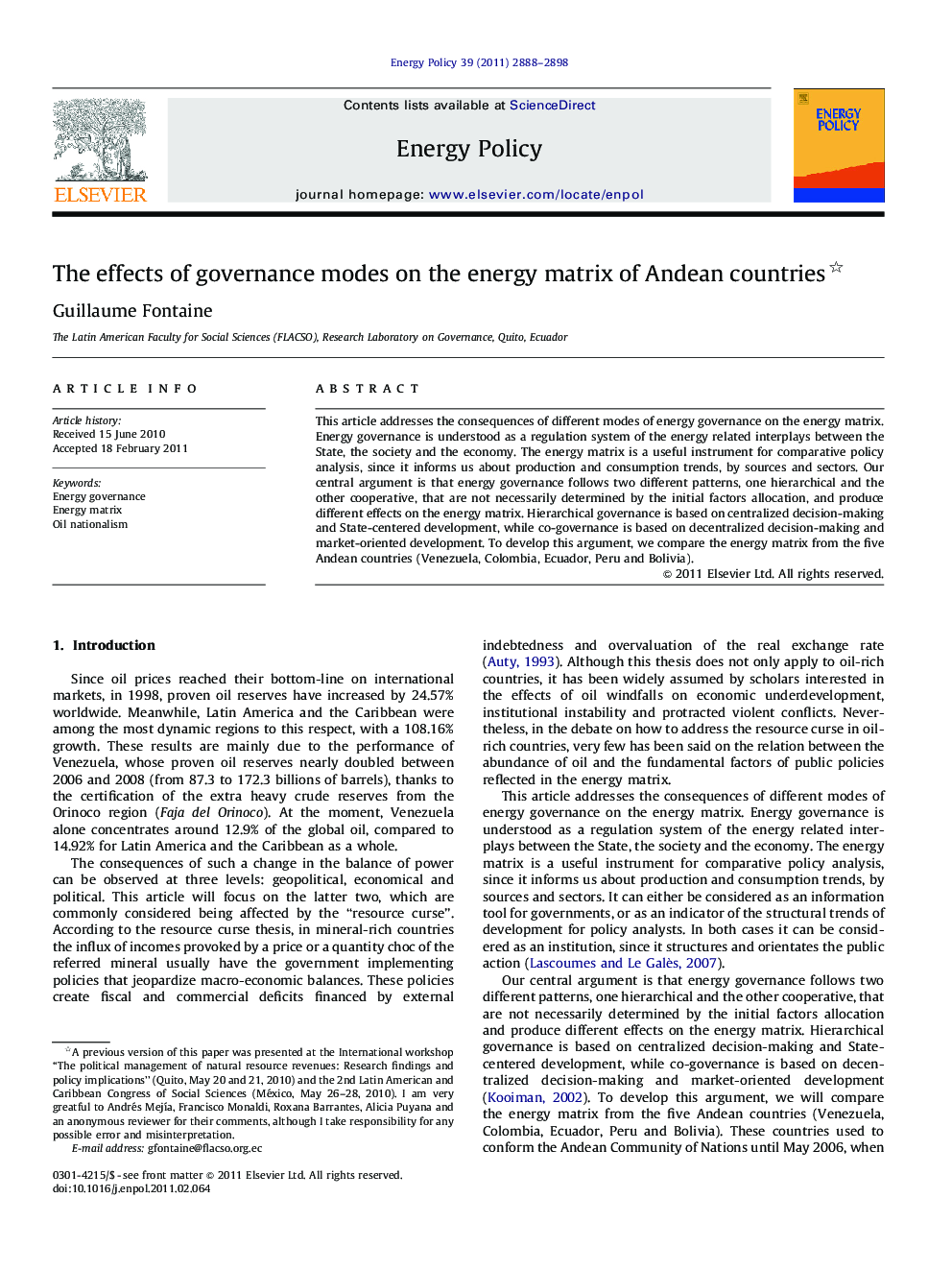| Article ID | Journal | Published Year | Pages | File Type |
|---|---|---|---|---|
| 995913 | Energy Policy | 2011 | 11 Pages |
This article addresses the consequences of different modes of energy governance on the energy matrix. Energy governance is understood as a regulation system of the energy related interplays between the State, the society and the economy. The energy matrix is a useful instrument for comparative policy analysis, since it informs us about production and consumption trends, by sources and sectors. Our central argument is that energy governance follows two different patterns, one hierarchical and the other cooperative, that are not necessarily determined by the initial factors allocation, and produce different effects on the energy matrix. Hierarchical governance is based on centralized decision-making and State-centered development, while co-governance is based on decentralized decision-making and market-oriented development. To develop this argument, we compare the energy matrix from the five Andean countries (Venezuela, Colombia, Ecuador, Peru and Bolivia).
